On one Hail Mary bead or as many as you desire, say: (this is given for Fr.
Carter, you can replace your loved one's name).
Pray the Hail Mary or Hail Mary's then pray this after the Hail Mary.
After the Glory Be— pray the following petition.
Note: You can look at Mary on the image rosary while you pray this rosary.
The life of grace just described expresses itself most perfectly in the Church's
liturgy, and at the same time it is from the liturgy that the Christian chiefly
derives strength for his life in Christ. Central to the Church's liturgy are the
sacraments, and, most especially, the eucharistic sacrifice.
1.
The Sacraments in General
A sacrament is a visible sign of an invisible, divine reality. Christ,
therefore, is the primordial sacrament given to men by God. In His
historical existence Christ was the visible, tangible manifestation that God
has irrevocably entered the world of man with His merciful, salvific grace.
At the same time Christ contained within Himself this divine reality which
He externally manifested.1
We have previously described the Church as the continuation of Christ.
Consequently, flowing from the idea of Christ as primordial sacrament, the
Church is also a sacrament. The Church continues the visible presence of
Christ which was attached to His historical existence. The Church, through her
union with the glorified Christ, both externally symbolizes and contains
within herself the divine reality of God's grace which has been irrevocably
communicated to man.
The Church as sacrament is a perduring reality. This perduring sacramentality
of the Church is actualized in a special manner through the seven sacraments.
As the Church is the general, visible continuation of Christ's Incarnation, so
the individual sacraments can be considered as particular, visible extensions
of Christ's Incarnation.
It
is evident, therefore, why the sacraments are special encounters with Christ.
For Christ unites Himself with the sacramental sign as He offers His grace to
the recipient of the sacraments. In this sense Christ and His sacraments
become one. The sacrament and its minister are merely instruments which Christ
employs to give Himself anew. The primary sacramental encounter is between
Christ and the Christian.
Christ offers Himself to men through the Church and her sacraments so that men
may become ever more united to Him. This incorporation into Christ begins at
baptism, through which the Christian is made both a member of Christ and a
member of His Church. This incorporation into the life of Christ means
primarily to be incorporated into His paschal mystery, since
death-resurrection was the essential and summary mystery of Christ's life. It
was the central mystery whereby He gave us life. It is the central mystery
which the Christian must relive in Christ.
Each of the sacraments deepens our incorporation into Christ's
death-resurrection. Each achieves this in a somewhat different manner
according to the primary purpose of each sacrament. Finally, and very
importantly, each of the sacraments deepens this incorporation into Christ
within an ecclesial framework. The sacraments, because they are the sacraments
of Christ and His Church, intensify the Christian's relationship not
only with Christ, but also with the members of the Church, and ultimately with
all men.
The death-resurrection of Christ, encountered in a special way through the
sacraments, is most especially renewed in the eucharistic sacrifice. Thus we
can see the logical connection between the sacraments and the Mass. All of the
sacraments point to the Mass. All of them, according to their own particular
finalities, allow for a more perfect participation in Christ's paschal mystery
as sacramentally renewed in the eucharistic liturgy.
2.
The Mass
How is
the paschal mystery and all the related mysteries of Christ renewed in the
Mass? As a preliminary step to
answering this question, let us first give a more detailed analysis of the
mystery of Christ which was briefly described in the chapter on the Church.
Put very briefly, this mystery is God's concrete plan of redemption centered
in Christ. The expansion of this idea leads to the theology of mysteries, a
much discussed topic since the time of Casel.
The following is one manner in which we may conceive of the mystery of Christ.
God Himself is ultimately the mystery – holy, completely transcendent,
completely other. God in His inner life is thus hidden to man, unless He
chooses to reveal and communicate Himself. He has so acted, giving Himself to
man in word and action in Christ. Thus, because the ultimate mystery, God
Himself, has communicated Himself in Christ, we have the mystery of Christ,
the Christian mystery. It is legitimate to speak in the plural, designating
the mysteries of Christ rather than simply mystery, because all that Christ
did was part of the one unified mystery. In all the events of Christ's life
God was communicating Himself and redeeming man in Christ.
There are other ways of describing the mystery of Christ, yet we find a common
denominator in our original statement: the mystery is God's concrete plan of
redemption in Christ.
How is this mystery of Christ contained in the liturgy? We can explain this
presence as follows.2 Christ's
mystery of redemption has a twofold aspect, one temporal and historical, the
other eternal. We first consider the historical, temporal aspect of this
mystery.
Christ is God present among us in human form, the entry of eternity into time.
Because of Christ's humanity, the acts He performed while on earth were
subject to the limits of temporal historicity. Consequently, the unique
historicity of these acts of Christ cannot be repeated, even sacramentally;
no, not even by God Himself. This would be asking the impossible of God, for
to reproduce a past act now in its temporal historicity is a
contradiction in terms. Hence Casel's theory of sacramental presence cannot be
held if it posits an exact reproduction of temporal historicity.3
Granted, then, the temporal-not-to-be-repeated aspect of Christ's earthly life
and actions, there is another aspect to be considered. Christ, although
possessing two natures, is only one person, and that divine. Consequently, the
historical redemptive acts of Christ are the acts of a divine person.
Necessarily, then, these acts partake of the eternity of the divine person and
therefore are perennial. They endure eternally in the glorified Christ.4
Through the medium of His glorified body, this eternal aspect of Christ's
redemptive acts can be made present sacramentally. In the eucharistic
liturgy the very person of the glorified Christ, containing within Himself all
His redemptive acts, is sacramentally present. In very brief form we see the
manner in which all the mysteries of Christ's life are reproduced in the
eucharistic liturgy. It is within the Mass, then, the heart of the liturgy,
that the Christian encounters the person of Christ and His mysteries. This
encounter takes place chiefly through the medium of the theological virtues.
In faith, hope and love the Christian, encountering the eucharistic Christ,
receives the supernatural strength to reproduce Christ in Himself. For
through contact with Christ in the eucharist, the Christian receives the grace
to relive Christ's mysteries in his own life. How true it is to say that the
liturgy, centered in the Mass, is aimed at transformation in Christ.
Granted the primary importance of the Mass, we will now examine in greater
detail the eucharistic sacrifice. In discussing the mystery of Christ and its
presence in the eucharistic liturgy, we have already said much concerning the
Mass. Yet we believe a schematically complete outline of the Mass will provide
a more desirable framework for our purpose of demonstrating the Christian's
eucharistic participation, a participation which is at the heart of
contemporary spirituality.
Our presentation will necessarily be only relatively schematic. At the same
time we hope it will not be superficial. We will make a fourfold division, for
we believe this is necessary for an intelligent discussion of liturgical
participation. First, we will treat of the notion of sacrifice in general.
Then we will consider Christ's sacrifice within the framework of sacrifice in
general. Next we will treat of the sacrifice of the Mass. Finally, we will
consider in some detail the individual's participation in the eucharistic
sacrifice.
_______
1Cf. Karl Rahner, The Church and the Sacraments (New
York: Herder & Herder, 1963), p. 15.
2Casel has given the great impetus to the theological
rediscovery of the reality of mystery presence in the liturgy. Therefore, when
we disagree with Casel we in no way intend to detract from the greatness of his
contribution.
3Cf. Edward Schillebeeckx, Christ the Sacrament of the
Encounter with God (New York: Sheed & Ward, 1963), pp. 55-56.
4Ibid., pp. 58-60.
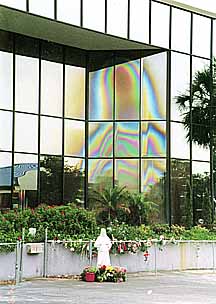
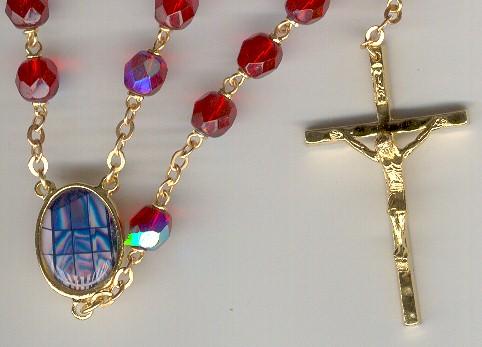

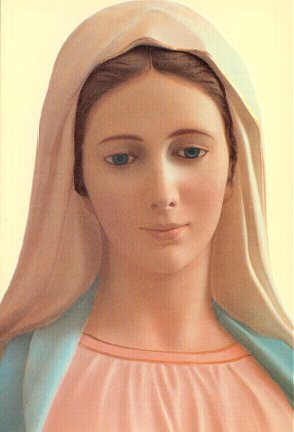
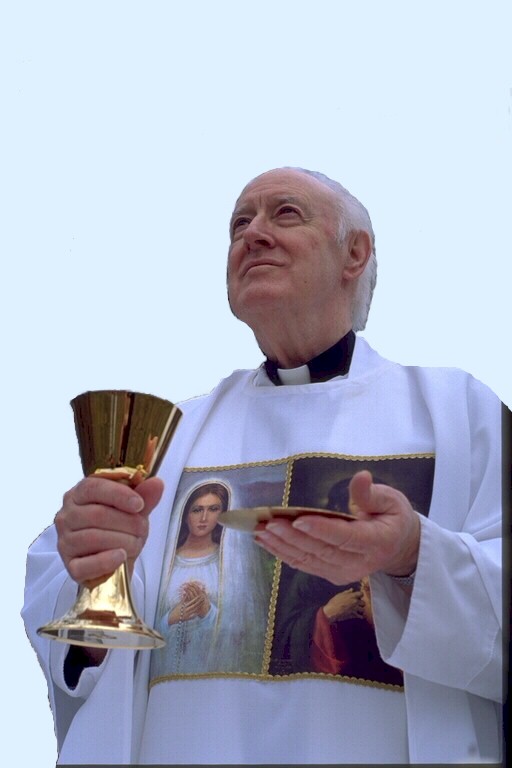
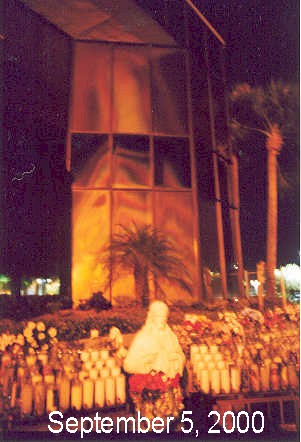

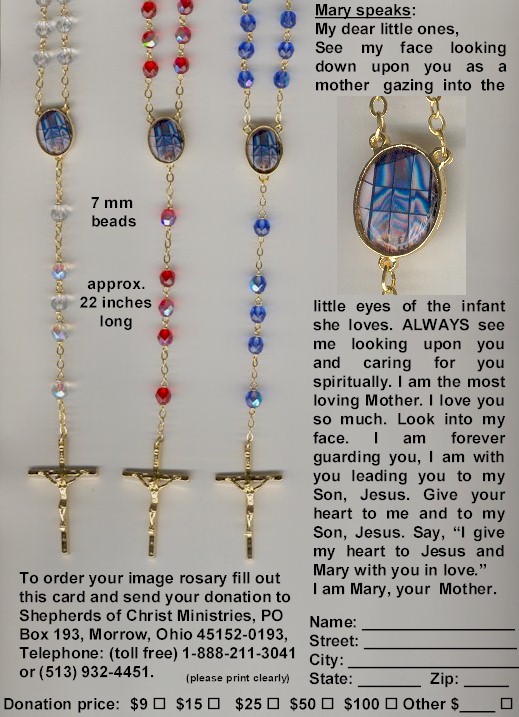
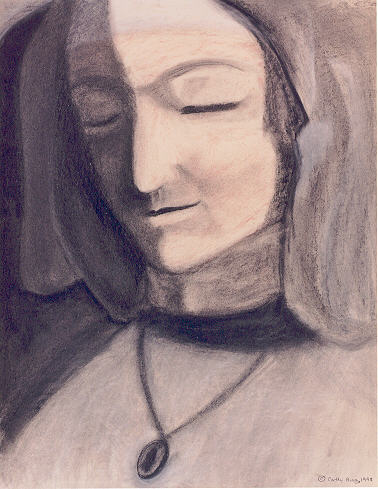 Mary's
Message from the Rosary of August 27, 1996
Mary's
Message from the Rosary of August 27, 1996

